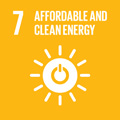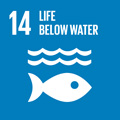- Docente: Barbara Mikac
- Credits: 6
- SSD: BIO/07
- Language: Italian
- Teaching Mode: In-person learning (entirely or partially)
- Campus: Ravenna
- Corso: First cycle degree programme (L) in Cultural Heritage (cod. 6600)
-
from Sep 25, 2025 to Nov 12, 2025
Learning outcomes
An overview of ecological principles, biogeochemical cycles, ecosystem processes, goods and services provided by ecosystems to humans is provided. Connections between natural and cultural assets are stressed. The relationships between ecosystem structure and processes are analysed in a context of conservation and restoration of cultural and natural heritage. Case studies referring to ecological factors affecting the degradation of cultural and natural heritage in the framework of global environmental changes are analysed. At the end of the course the student will have the skills needed to assess the sustainable use of the cultural and natural heritage
Course contents
The course addresses various topics in ecology that aim to highlight the close connection between natural and cultural heritage. The concept of ecosystems, their structure and functioning, their abiotic components, the atmosphere, climate, and the cycling of matter in ecosystems will be introduced. Through case studies, students will learn how abiotic environmental conditions (temperature, humidity, air pollution, etc.) influence cultural heritage, how human-induced alterations in biogeochemical cycles are negatively impacting cultural heritage (the impact of ocean acidification on submerged cultural heritage and the impacts of climate change on cultural heritage will be discussed). The concepts of interactions between organisms and the environment, biological interactions (such as symbiosis, competition, parasitism, and others), community ecology, and biodiversity will be supported by several case studies, such as research on the biodeterioration of archaeological and historical-artistic heritage by organisms, the impact of alien species on cultural heritage, and others. The importance of ecosystem goods and services will be explored. Special attention will be given to the negative impacts of human activity on natural resources (such as pollution, habitat degradation, biodiversity loss, and the impacts of climate change) and to tools for environmental protection. Finally, the concept of sustainability and UNESCO World Heritage sites will be discussed.
Readings/Bibliography
Readings required for exam preparation:
Pusceddu A., Sarà G. and Viaroli P. (2020) Ecologia, ed. UTET Università, Italia, p. 362
Students should also study several scientific articles used as case studies. These required readings will be indicated during the lectures.
Moreover, students will have to study the PowerPoint presentations presented during the lectures, which will be made available on Virtuale.
Other non-mandatory texts that will be used during the lectures and that are recommended for further study will be indicated during the course.
Teaching methods
The course will consist of lectures, student-led seminars based on the indicated readings, and case study discussions. Therefore, attendance is strongly recommended. Before some lectures, all students will be required to read in advance the texts indicated by the professor and prepare notes for the discussion. For the seminars, two or more students will prepare a class presentation for each seminar, based on the indicated topic and literature, accompanied by slides, lasting between 8 and 10 minutes. The presentations will form the basis for an open discussion to explore the emerging themes. During the lessons the professor will use Power Point presentations.
Assessment methods
Assessment consists of an oral exam on the topics accessed during the course and will include three questions. Where appropriate, students will be required to support their arguments with case studies analysed during lectures.
The final grade will be based on: the level of scientific and methodological depth of the topics covered, including connections with the case studies analysed during lectures; the ability to synthesize and critically analyse the arguments accessed during the course; the ability to make interdisciplinary connections; and the property of scientific language and exhibition quality.
The final grade will be given from 1 to 30.
Exam dates will be published on the AlmaEsami website. Students may register for exams exclusively using the methods provided by the AlmaEsami online system.
Teaching tools
PowerPoint presentations, scientific articles, and chapters from the indicated textbook.
Students requiring specific services and adaptations to learning activities due to disabilities or specific learning disabilities (SLD) may contact the Service for students with disabilities and SLD directly to discuss the most appropriate arrangements.
Office hours
See the website of Barbara Mikac
SDGs




This teaching activity contributes to the achievement of the Sustainable Development Goals of the UN 2030 Agenda.
